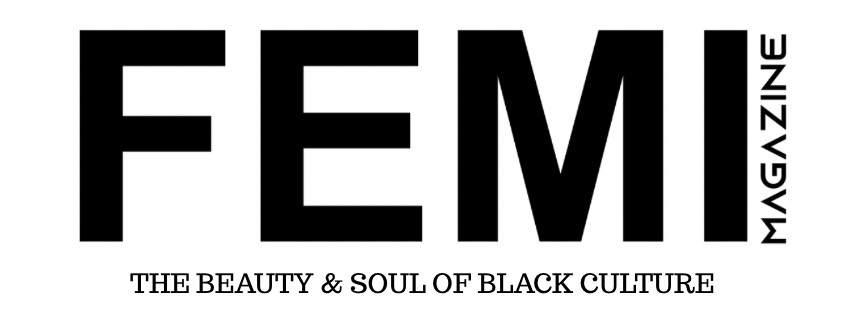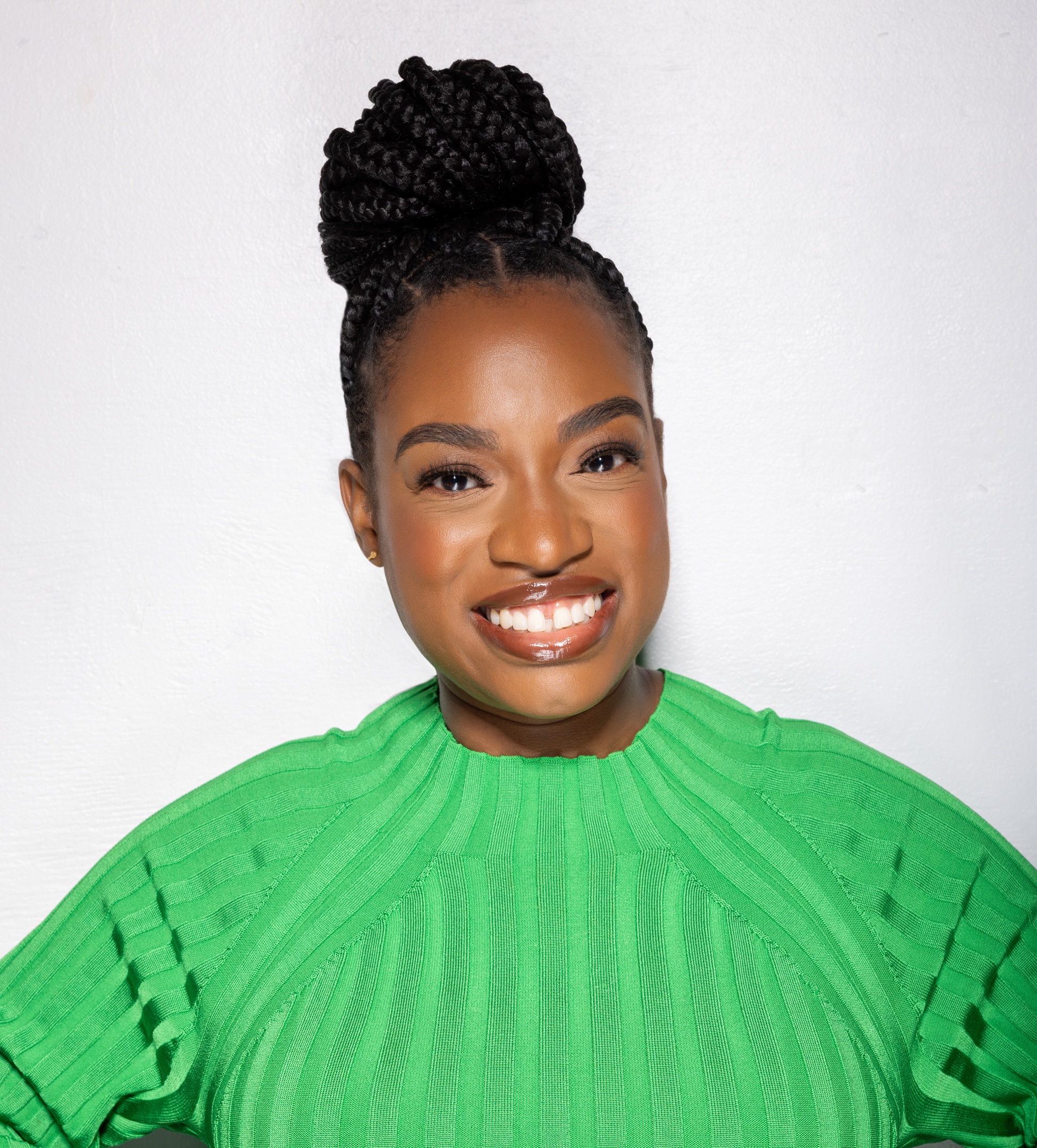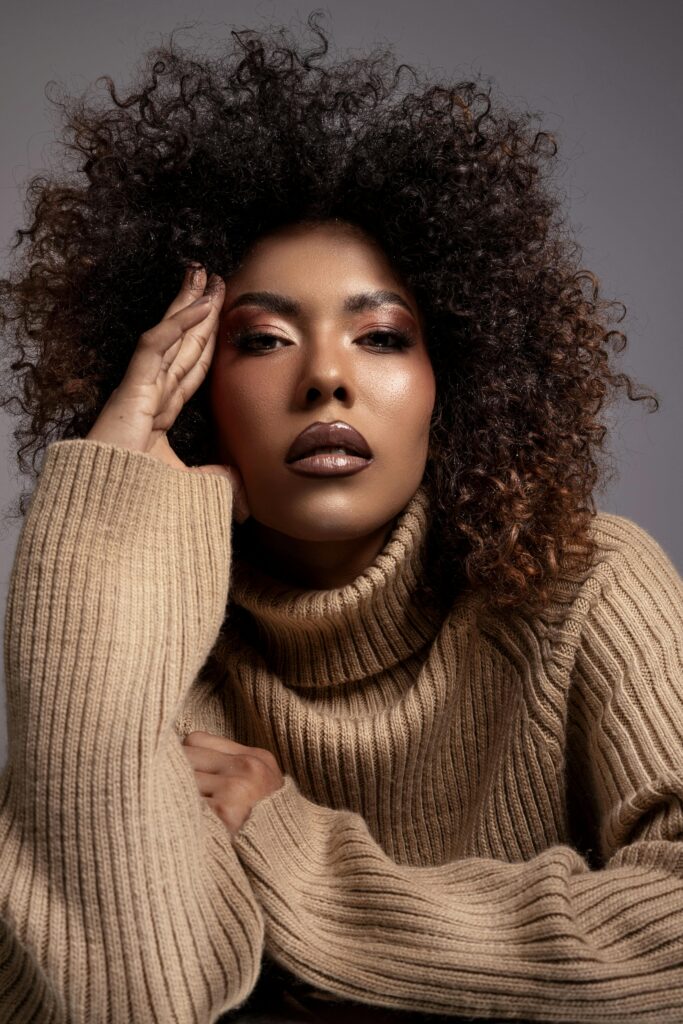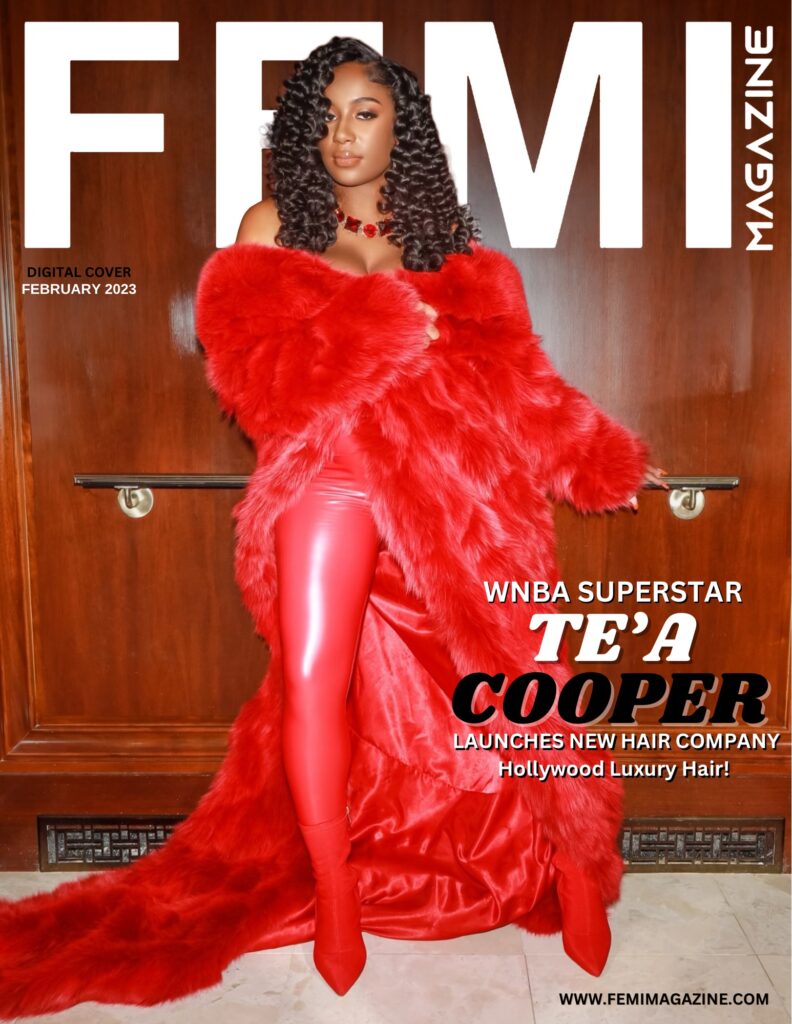Melda Moda is a fashion brand that is owned by a Black woman, Melissa Lockhart, and is based in New York City. The brand offers a range of sleepwear that is inspired by Lockhart’s Caribbean heritage and millennial experiences and is a blend of culture, comfort, and style. Melda Moda emphasizes inclusivity and sustainability, aiming to inspire a sense of relaxation, self-care, and cultural connection through its designs.
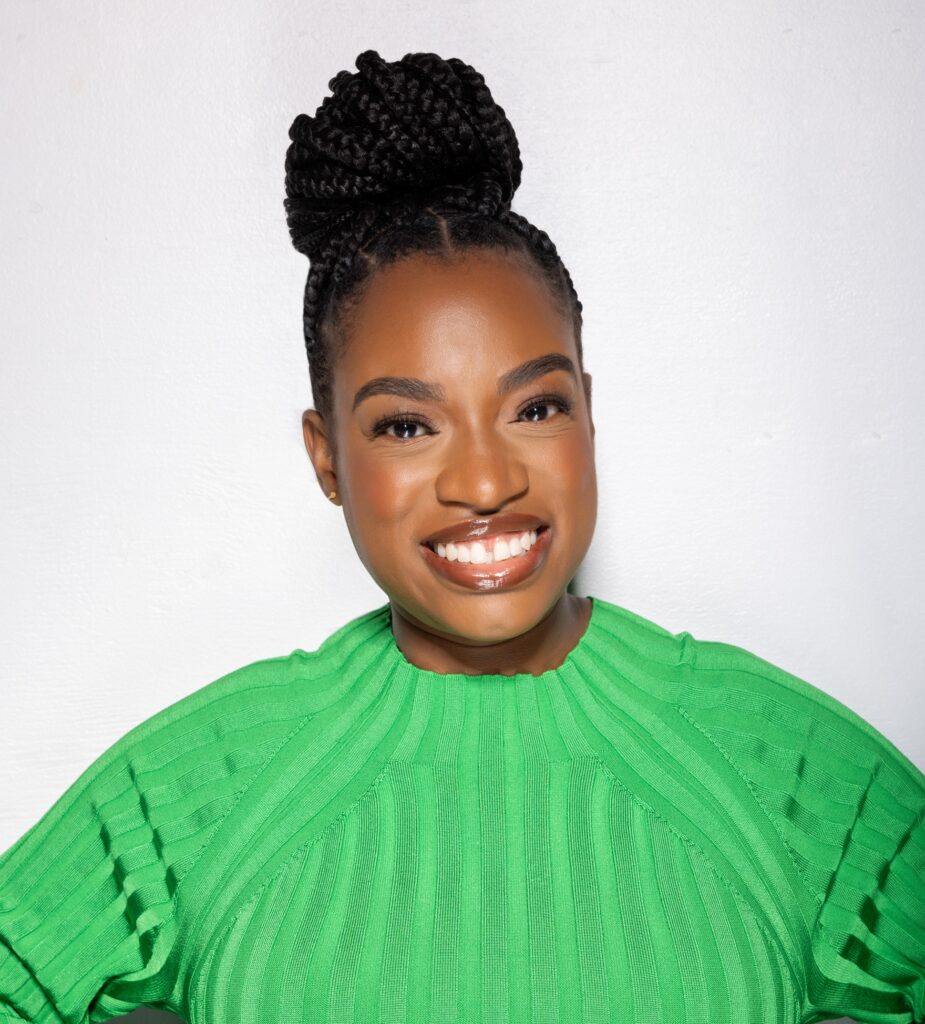

What inspired you to become a fashion designer?
I hesitate to call myself a designer because I’m not trained in this but I’ve always loved clothes. Growing up, I’d spend a lot of time at fabric shops with my babysitter and the brand’s namesake, Melda. I’d watch her pick out printed fabrics, bright zippers, and buttons, and watch her cut the pattern and sew items when we got home. Getting dressed was the way I expressed myself. During quarantine, I found that I missed the brightly colored outfits I’d wear to work or events. But it made no sense to wear my going-out clothes to sit at home so I spent a lot of time in black leggings, gray sweats, and graphic tees that I got as free swag. I realized that I had put a lot of care into my going-out wardrobe and absolutely no care into my home clothes. I decided that I should have some cute home clothes and started looking for pajamas. I couldn’t find any of the prints I wanted – ones that reflected my culture as a Black millennial New Yorker with Caribbean heritage – so I decided to create it.
How would you describe your design aesthetic and signature style?
It’s bright colors and bold prints. The sleepwear has a generous cut so you feel comfortable and cozy as you move around your home. The fabrics are soft and silky. I called the pieces slumber suits and relax wraps because I want you to think of them as statement pieces for your home wardrobe. There is just as much intention put into the design for these items as I would put into an outfit that I would wear out to an event. In fact, some people have told me that they’ve worn our pieces out during the daytime.
What do you consider to be the most important elements of a successful fashion collection?
I’d say thoughtful design and good construction are probably the most important. How do people feel when they put your pieces on? My mom, who is an amazing cook, always says that her food is so great because she puts love into it. I think there needs to be an element of love put into the collection too.
How do you stay up-to-date with the latest fashion trends and industry developments?
I spend a lot of time on social media – Instagram. TikTok. I read fashion and lifestyle magazines and if I come across a trade article I’ll read that too.
What materials and textiles do you enjoy working with the most, and why?
Right now we are using viscose satin. It feels silky, moves and drapes well, and really takes to the color of our prints.
We’re also working with EcoVero by Lenzing which is a viscose made from certified renewable wood sources. I want to build the brand more sustainably so I’m proud we were able to find something that had that soft feel but also has a mind on the environmental impact.

How did you approach the design process from the initial concept to the final product?
Whew! There was so much. Again, I’m not trained in design neither technical fashion design or graphic or surface pattern design. So I came up with the concepts and created moodboards. When it came to the pattern, I knew what elements I wanted whether that was an elasticized waist or a flat panel, I wanted a hidden button placket, pockets, etc. So I found pictures of those different elements and created a mood board. I gathered items from my closet and then I worked with a designer who knew the language and could translate that into a technical file and then we got a pattern maker to make the pattern.
It was a similar process when it came to the prints. I created mood boards that included the different elements I wanted to be reflected. Whether that was a sorrel blossom or a panther, or a leaf shaped like a heart. Then I told the stories behind those boards to some amazing graphic designers and surface pattern designers who put them all together.
Can you share any behind-the-scenes stories or challenges you faced while creating a specific collection?
The whole thing felt like a challenge. It took forever to get our first tech pack. A lot of the factories had high minimum order quantities which meant that we couldn’t work with them. Then a factory we settled on tried to increase our minimum order quantity by 600% This brand is self funded so that was not possible AT ALL. Then, our product delivery dates got pushed back a few times. We completely missed the launch date. In the final weeks, I found out that care tags had been printed with the wrong information on them. There were lots of tears and essays about my frustration sent to the group chat. Thank God for those girls. They listened and encouraged me to keep going.
How do you ensure that your designs are both fashionable and functional for everyday wear?
I did a target market survey when we were first starting out. Let me tell you, the ladies were adamant about having pant pockets in their pajamas. After we launched solicited feedback from people who made purchases. What did they like, what didn’t they like? I’ve been doing pop-ups and I pay attention to what people say when they take an item off the clothing rack. There are a contingent of women who are very particular about fabrics because they are at a certain age where sweating is a problem. So I listen to all of that. But I also know what I like and what I don’t like. For instance, I loathe when I have a pair of pajama pants and the drawstring gets caught. Then you’re either walking around with one long string or you pull it out and have those ugly holes in the waistband. So there are no drawstrings in our pajama pants because I feel particularly strongly about that. Then I wrote about it on Instagram and someone said she didn’t like drawstrings because she didn’t want to have to tie them in the middle of the night. I took that as confirmation to not include them.

Are there any specific cultural or historical influences that often inspire your work?
I love this question. One of the reasons I thought I should even start the brand was because I couldn’t find prints that spoke to my identity. If I’m describing myself I’d say a few things: I’m a Black woman. A millenial. A native New Yorker, a Brooklynite to be exact. A traveler. A child of Caribbean descent. Our logo and at least two of our prints are based on sorrel. Sorrel is a red drink that is usually served around Christmas in the Caribbean. My parents came here from St. Vincent and the Grenadines. My mother learned how to make sorrel from her mother, my grandmother. And every Christmas, she’d boil the dried sorrel, grate ginger to spice it up, add in some aromatics, and sweeten it with sugar. My job was to help her bottle it up to give away to friends and family. I have so many beautiful memories of that time and I loved the drink. I didn’t see any pajamas with that. So that’s our logo and it’s featured in several of our prints. Upcoming prints are also inspired by those other aspects of my life and culture.
How do you incorporate sustainability and ethical practices into your designs and brand?
Sustainability is a space I’m still learning about and I hope we will grow in our efforts but we try to do this in a couple of ways.
Our packaging supplier provides packaging that is either reusable, compostable, or made from recycled materials. We work with factories that pay their workers fair wages and in a timely manner. One of our factories was so focused on sustainability that I never got a full pajama sample in our printed fabric until they had started the full production process. They insisted on using leftover fabrics to make the early samples. We used EcoVero by Lenzing, a sustainable viscose made from certified renewable wood sources, for the sorrel print slumber suit and relax wrap. The care and content tags in that collection are made from recycled polyester satin (rPET).
What are your favorite fashion-related books, magazines, or websites for creative inspiration?
As someone trying to build a brand, Wildflower by Aurora James was foundational reading. Right now, I’m making my way through Fashion in Color the Harlem’s Fashion Row (HFR) book dedicated to Black Fashion Designers. I’m lucky enough to live near the Brooklyn Museum which has amazing fashion exhibits. I take a lot of inspiration from fictional characters on TV and in movies. The styling on the last season of Harlem? Amazing! Carrie Bradshaw will always be a style icon as is Olivia Pope. Kerry Washington can do no wrong. I love seeing how the influencers and soft-life girls put looks together on Instagram. Red carpet looks – every look that Law Roach ever put together. Beyonce’s Renaissance tour looks! The outfits keep changing and they are all amazing. A friend said they need to make an exhibit at the BK Museum and I really hope they do that. For fashion magazines, I’m inspired by Essence, Elle, Vogue, Harper’s Bazaar, The Cut.
How do you balance creativity and innovation with meeting market demands and customer preferences?
I heard some good advice that said something like don’t introduce another thing until you have hit a certain amount of revenue in the first thing. So people want mumus, and long nightgowns, and lingerie. And I want to do all of that. I’m taking notes and filing them away for later but we need to prove out our thesis with these slumber suits and relax wraps because those patterns are already made. Every new pattern we’d introduce would mean more money being spent on a technical pack and samples and I need to be smart with my coins right now! So I take note but like I used to tell employees when I worked in HR, “It’s not a no but it’s not a priority right now.”
Can you tell us about a particular fashion show or event that was memorable for you and why?
I used to have a fashion blog back in the early aughts so I got to go to quite a few fashion shows which was always a good time but when I think of a particular memorable moment in fashion, it’s Little Kim in that purple jumpsuit with the purple wig and pasty at the VMAs. I was in my early teens and in a phase where I didn’t want to stand out. I’d say go shopping with my cousin and say things like, “That’s too conspicuous” about anything that would make me stand out. But Kim who was from Brooklyn, like me, stepped onto that stage in that sparkly purple and it was the most glamorous thing I ever saw. After that, I didn’t mind being conspicuous. I even bought a gold denim Girbaud outfit and wore it to school eventually.
How do you approach designing for different demographics and body types?
I was the first fit model and I have hips and a butt. I have had pajamas that felt too tight in that area and since it was my design, I didn’t want to feel cramped in something I was going to sleep in so I made sure we accommodated that. I’m short so pajama pants that fit me don’t fit my 5’11+ friends. I added shorts and robes so they could have things that worked for them too. The first robe samples were really narrow so I sent it back with notes that we needed a couple more inches. That would not have worked for the girls with the legs hips and body.
Right now we run from size S – 2X. I eventually want to go down to an XS and add more plus sizes. I’ve also heard from a few women who might be small on top and large on the bottom or vice versa. I’d love to be able to offer separates and to work with fit models who are shaped differently from me so we can be more inclusive of body types.

How do you handle criticism or negative feedback about your designs?
Some of the first feedback I got was negative. It was from one of the first orders to be delivered. It didn’t matter that the person had said some positive things too. I was definitely in my feelings about it. I might have even gotten a little defensive with them. But this is someone who had spent their money on an unknown brand, so I owed it to them to listen. And I’m sure there will be more of that as the brand grows. And I want the brand to grow so even if it stings, I have to listen and make adjustments.
How important is it for you to establish a personal connection with your clients and understand their preferences?
I was very resistant to being the face of this brand. I remember thinking, “Does anyone know who is behind the Gap? Does Victoria of Victoria’s Secret even exist? I don’t know” But those brands were built at a different time. A lot of brand building now is founder-led and I see that even in the responses to social media posts. People gravitate towards the ones where I tell my stories. So I’m forcing myself out of my comfort zone and interacting with people and as I interact with them, I’m learning their likes and dislikes. Like the person who doesn’t want to be bothered with tying a drawstring when she wakes up to use the bathroom in the middle of the night. Or the ladies who are in a phase of life where sweating in their sleep is a thing. That’s not something I’ve experienced so it didn’t even occur to me! So I’m glad I’ve been out at these pop-ups or having these 1:1s and DM conversations. I think it will only make the brand better once we are in a position to act on all the things we want to act on.
What advice would you give to aspiring fashion designers who are just starting their careers?
Read Wildflower by Aurora James. Treat it like a textbook. There are so many good lessons to learn from her story.
Find a community or a mastermind group. This journey gets difficult. It is more tolerable when you have people who have or are going through similar situations to talk to.
Be a student. Take more classes. Ask questions of the people who are doing the things you want to do. And most importantly, use what you learn and take action.
Can you share any upcoming projects or collections you’re excited about?
I’m really excited about the sorrel print. It was handpainted by a UK-based surface pattern designer and she brought the pieces I put on the moodboard together so beautifully. The colors are so vibrant! It represents my Vincentian heritage, the history and culture that my parents brought with them to the States, and the wonderful community they built here, which included our namesake Melda, and her family. I see them when I see that print and it makes me so proud to be able to honor them in this way. When I put on the sorrel print slumber suit for the first time, I found myself jumping for joy in front of the mirror. I thought, “I did that!”
Stay Connected with the brand Melda Moda by visiting the links below!
www.meldamoda.com | Facebook | Tiktok | Instagram
Follow Us On Social Media!